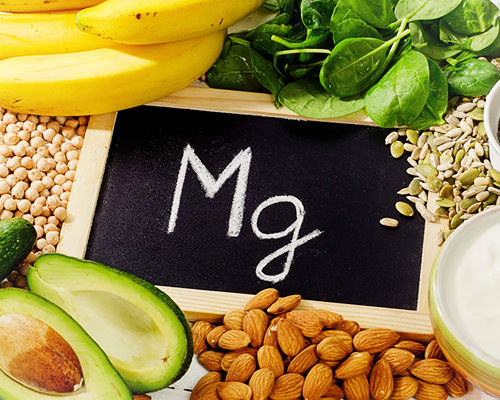When it comes to increasing your nutrient intake, the usual vitamins and minerals probably come to mind. Vitamin C for immunity, Vitamin A for eyesight, calcium for bones are probably at the top of your list. One important mineral you may be overlooking? Magnesium. This mineral plays a role in a multitude of bodily functions, from regulating blood pressure and blood sugar levels to supporting bone health, and yet many people don’t give it a second thought. You may want to start upping your intake starting now: Magnesium gives a host of health benefits, including potentially reducing stress and anxiety, ever-present in this day and age.
The Benefits of Magnesium
A 2017 review published in the journal Nutrients looked into the effects of magnesium on various disorders and sources of stress, ranging from premenstrual symptoms to postpartum depression to chronic fatigue, among others. While further studies need to be conducted to come up with anything definitive, the current literature suggests that magnesium indeed has many benefits. You can increase your intake of magnesium-rich foods to ease stress and anxiety as well as to:
Keep blood sugar in check. With the modern diet of highly processed and sugar-filled foods, many people are at risk for developing Type 2 diabetes. Studies suggest that increasing the intake of magnesium may help improve blood sugar levels, helping prevent diabetes. This doesn’t mean that you can eat all the sugar and carbs you want and just pop a magnesium supplement—you should still have a holistic approach to blood sugar management, which includes a healthy diet and an active lifestyle.
Lower blood pressure. Studies indicate that increased magnesium intake may lower blood pressure in people who are hypertensive. While it may not have any impact on those with normal blood pressure, magnesium’s other benefits should be enough reason to consume magnesium-rich foods.
Prevent migraines. People who experience migraines know just how debilitating these headaches can be. According to research, you may be able to keep those pesky migraines from attacking by supplementing with magnesium: A small-scale study on children with frequent migraines found that those who took a magnesium supplement experienced markedly fewer migraines than those who took a placebo.
Keep inflammation at bay. You can soothe sore muscles by soaking in an Epsom salt (a.k.a. magnesium sulfate) bath but you can also prevent chronic inflammation—one of the contributors to a host of serious health issues, from heart disease to cancer—by making sure you aren’t deficient in magnesium.
A List of Magnesium-Rich Foods
Many people don’t meet the recommended daily intake of 400mg of magnesium. You can increase your intake by consuming the best magnesium-rich foods like:
Dark chocolate. You know how when you’re really stressed out, you’re tempted to reach for some chocolate? Give in to the dark side or, more specifically, to dark chocolate. Just a small piece can give you about 64 mg of magnesium. The darker, the better so go for one that has at least 70% cocoa.
Spinach. We all know that vegetables in general are good for you but dark, leafy greens like spinach are especially high in magnesium. A cup of cooked spinach contains 157 mg of the mineral! Sub your lettuce with spinach and top with some grilled chicken for lunch, or steam a bunch and serve it alongside your dinner.
Nuts. An ounce of cashews contains 82 mg of magnesium. Other magnesium-rich nuts are almonds and Brazil nuts. Top your spinach salad with your favorite for a double dose of magnesium.
Seeds. There are so many seeds that can be consumed in a number of different ways—you can mix sunflower seeds into your homemade granola, sprinkle sesame seeds on a salad, or throw in some chia seeds into your smoothie. Snack on pumpkin seeds, which contain a whopping 150 mg of magnesium per ounce. Flax is also another magnesium-packed option.
Banana. This fruit is known for having a lot of potassium but bananas also have a good amount of magnesium.
Avocado. It’s a great source of healthy fats as well as magnesium.
Black beans. On top of being an excellent source of protein, beans also contain plenty of magnesium. Black beans in particular contain 120 mg per cup. Other beans like lentils, chickpeas, and soybeans can also give you a magnesium boost.
Whole grains. Have a bowl of oats or buckwheat for breakfast, the latter of which contains 65 mg of magnesium per ounce. You can also substitute your usual rice with some quinoa.
The best thing about these foods is that they’re also packed with plenty of other nutrients. So, increasing your intake of whole foods containing magnesium naturally increases your intake of other good stuff and helps improve your overall health.
sources
https://draxe.com/
https://www.psychologytoday.com/
https://www.rd.com/





